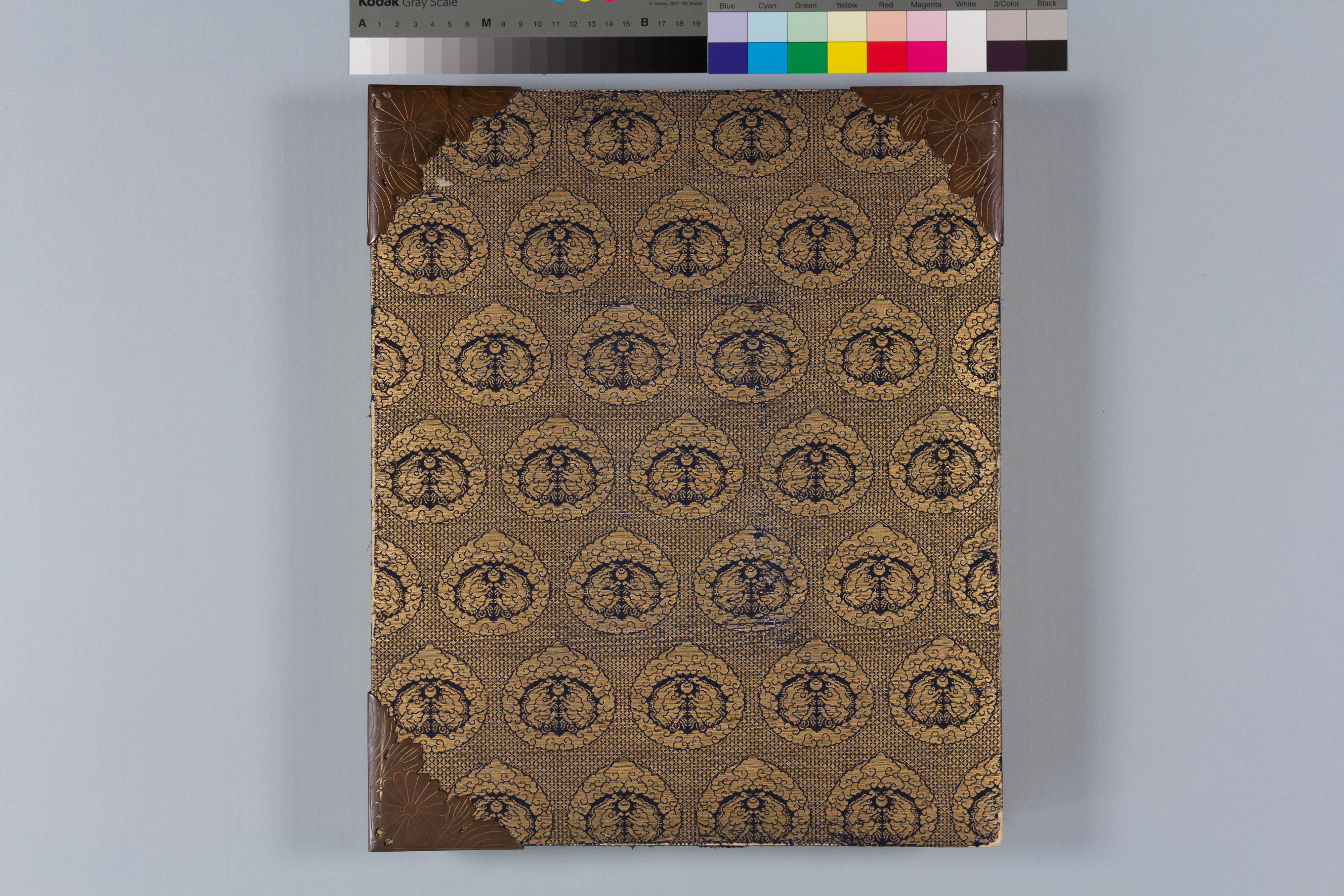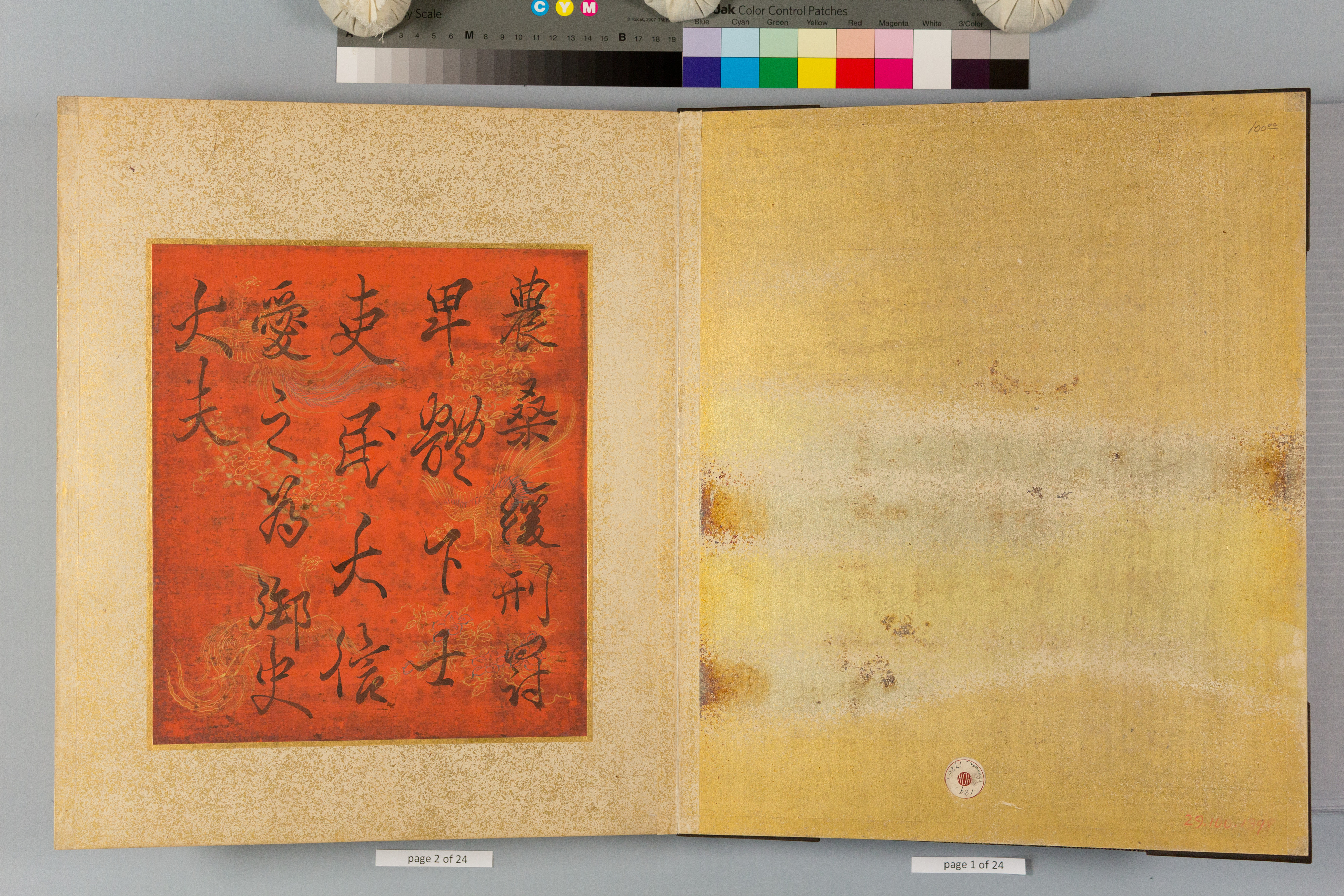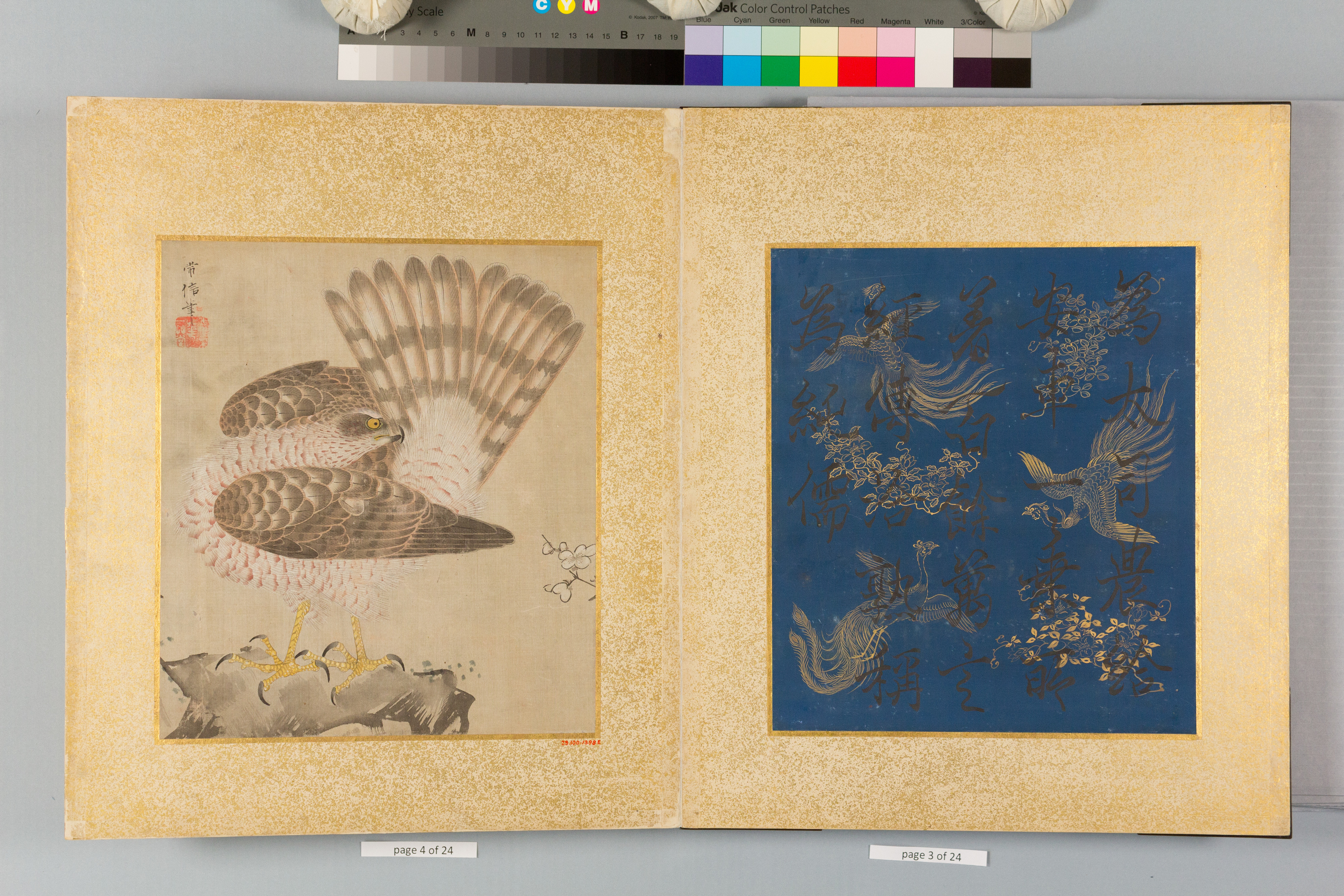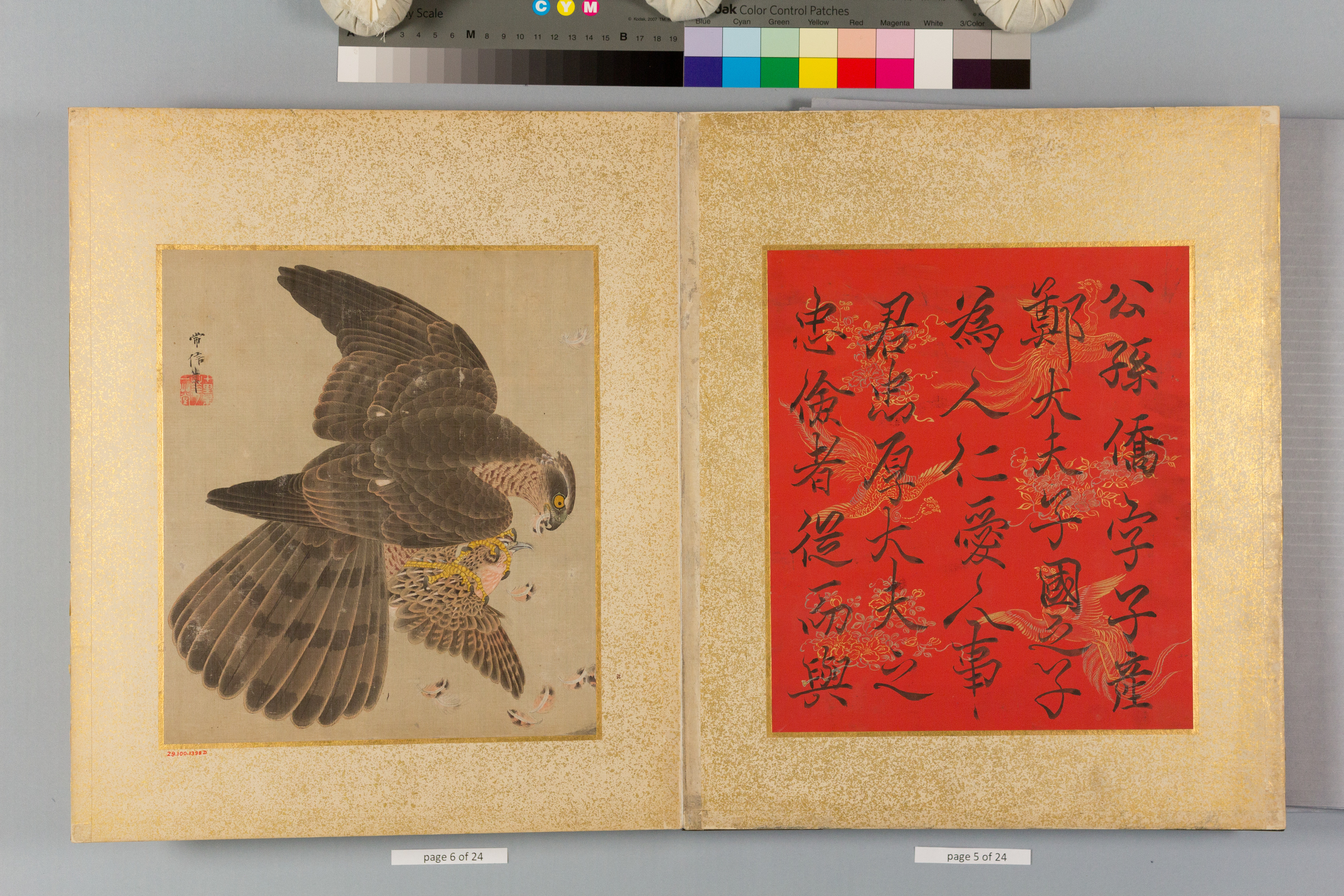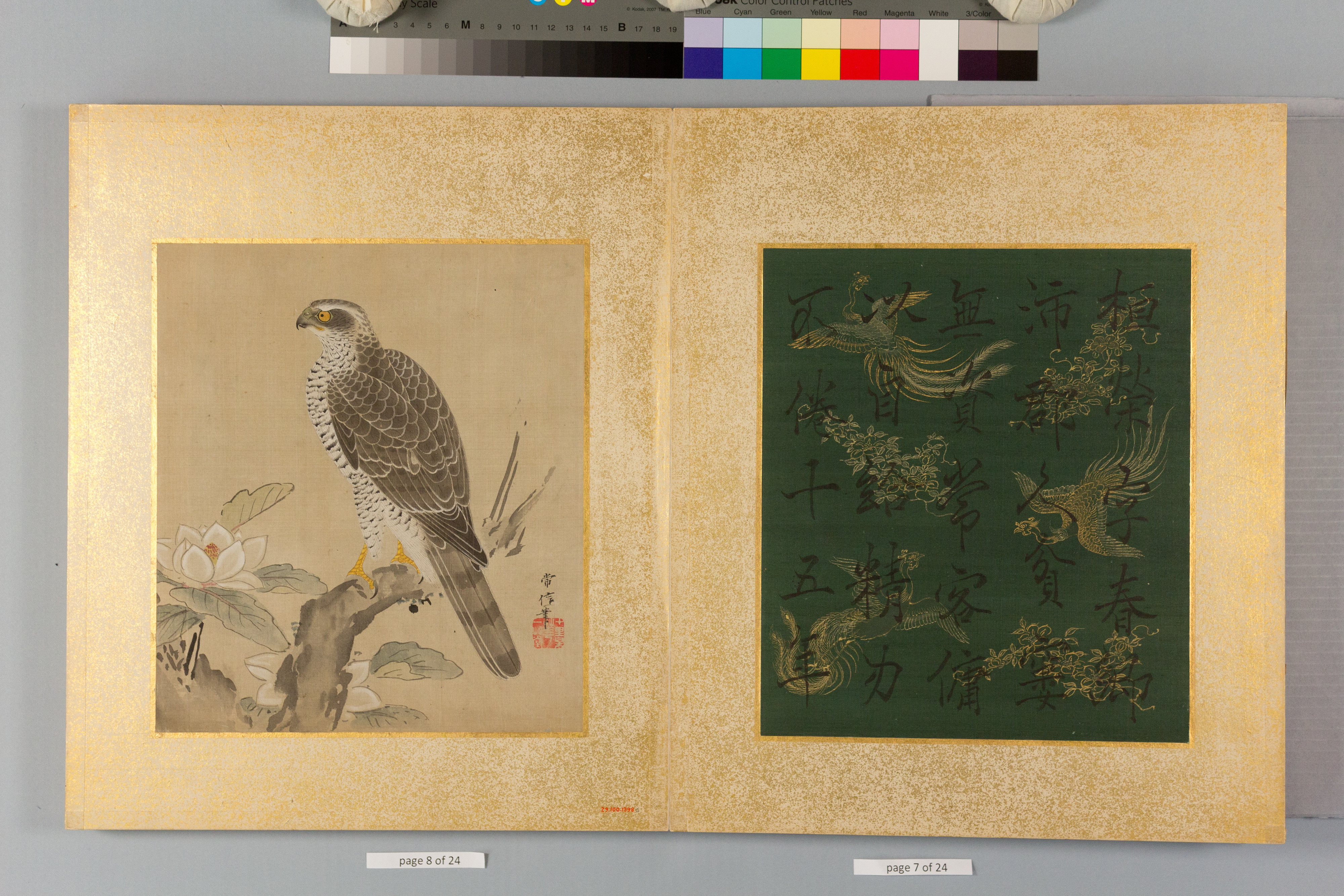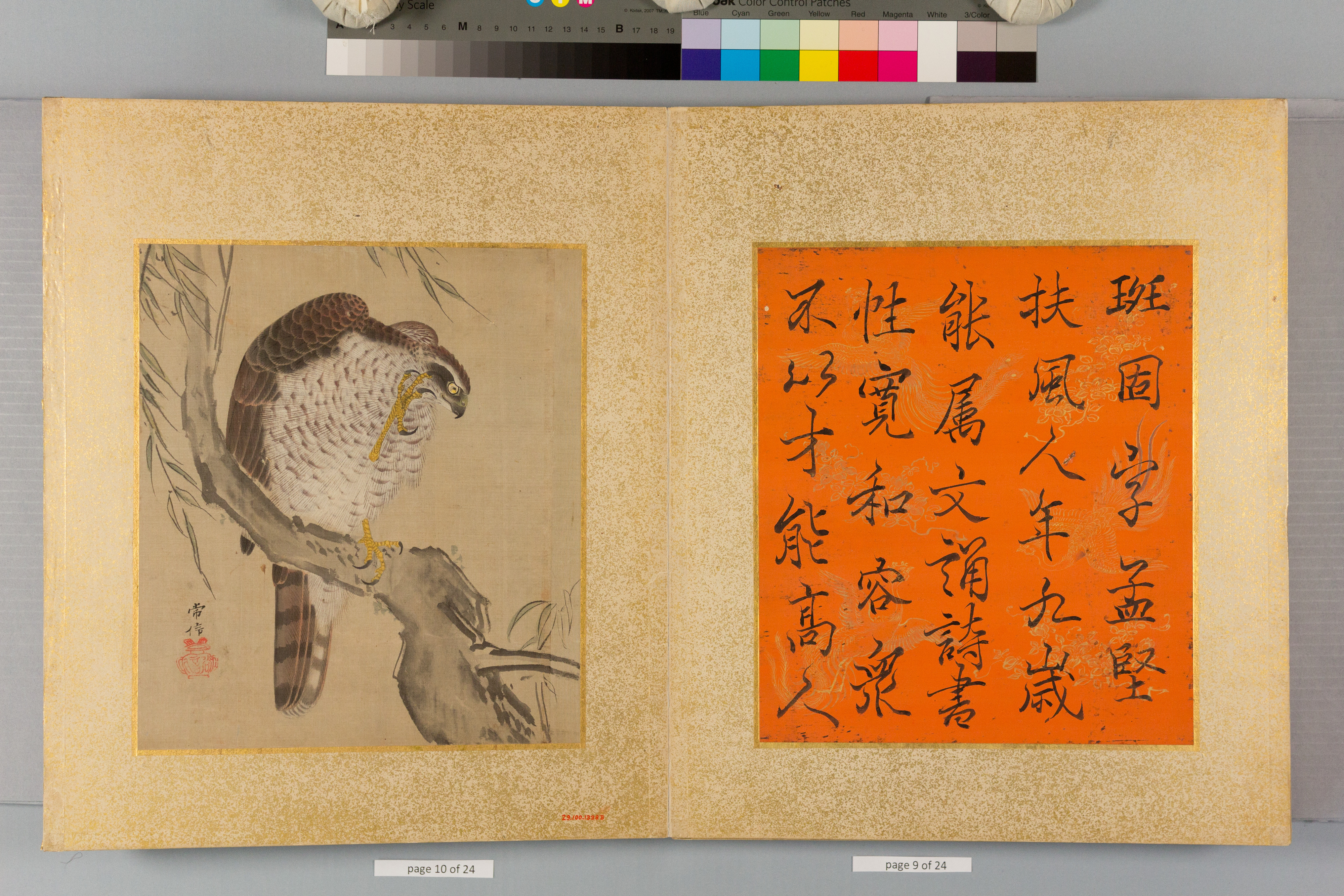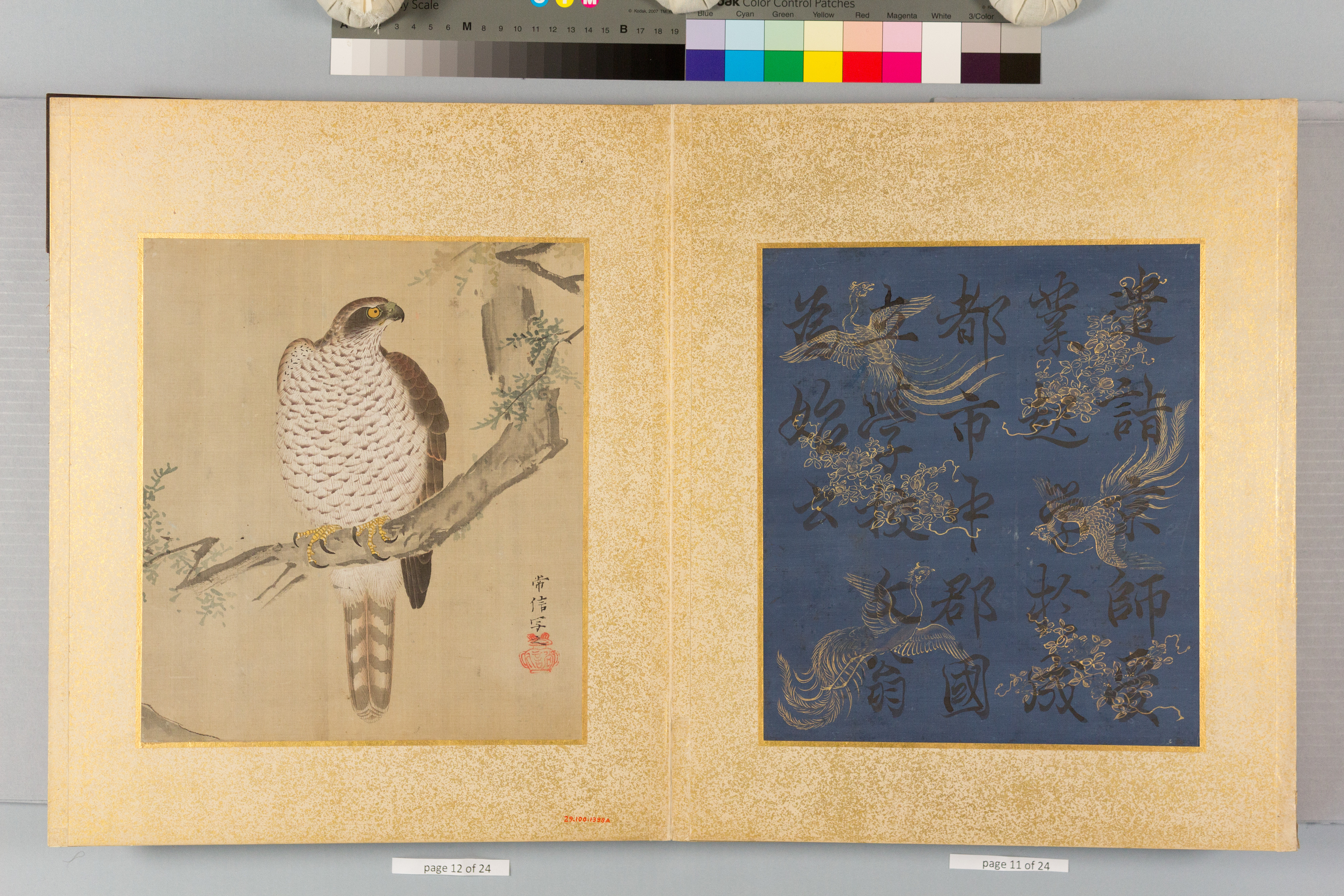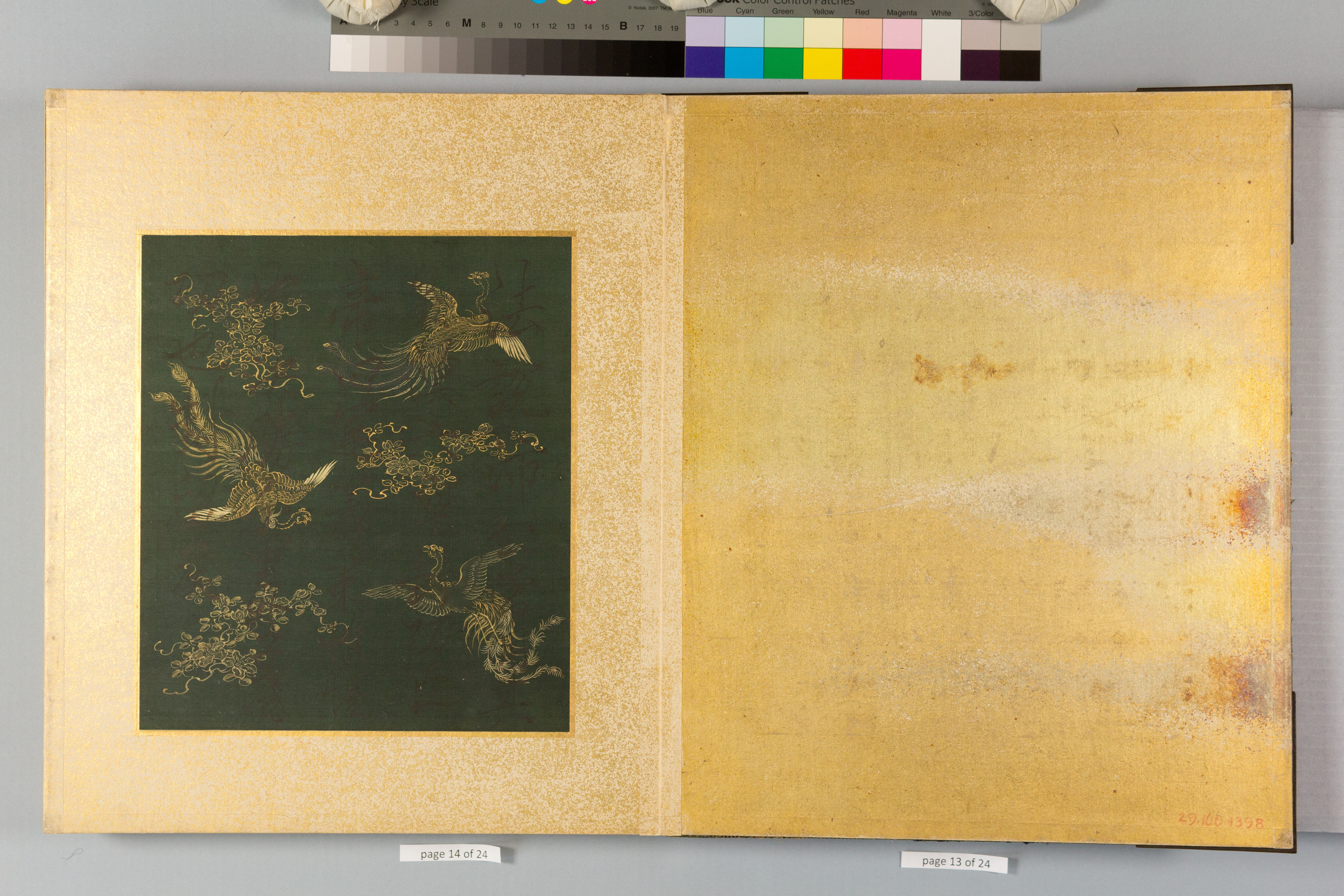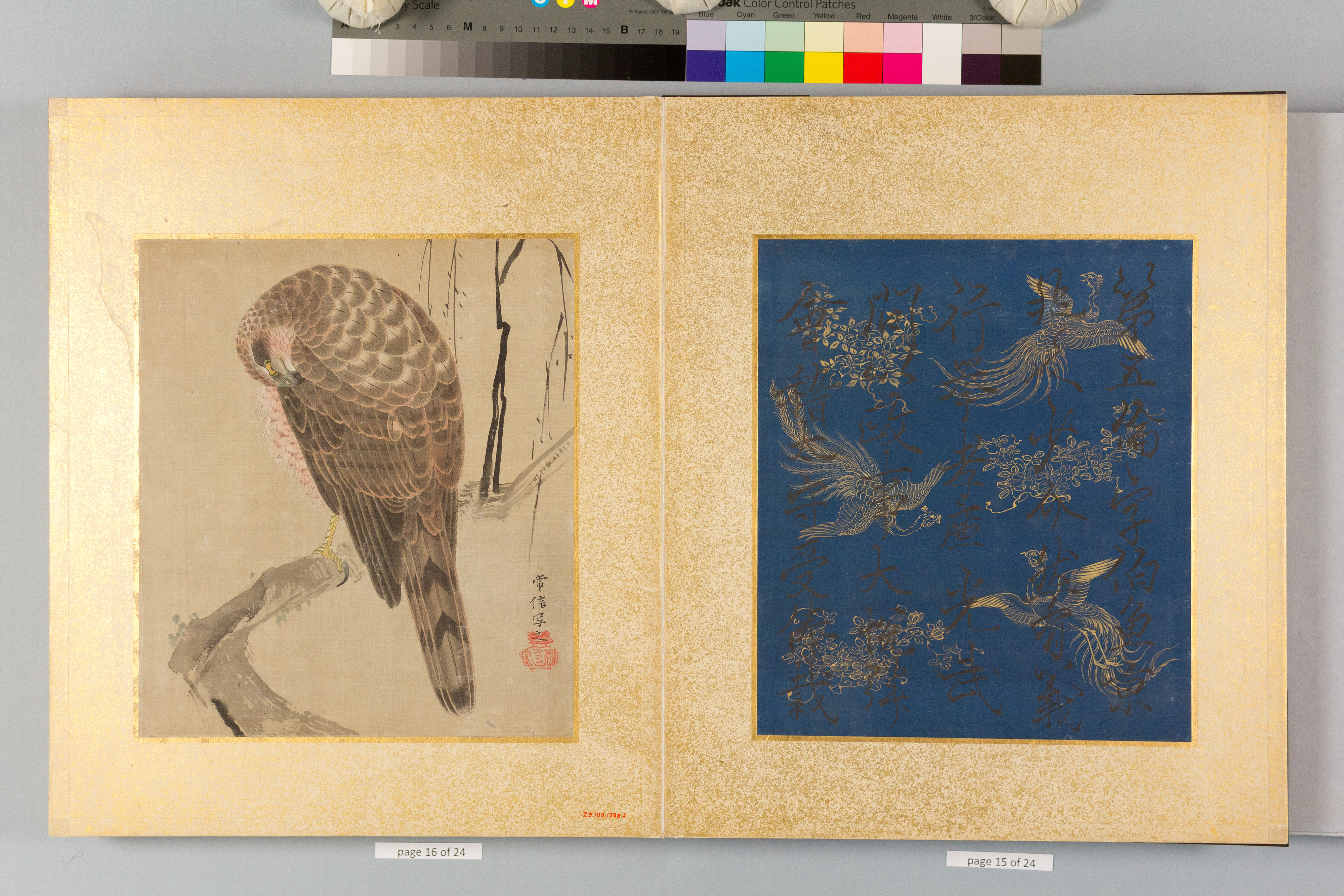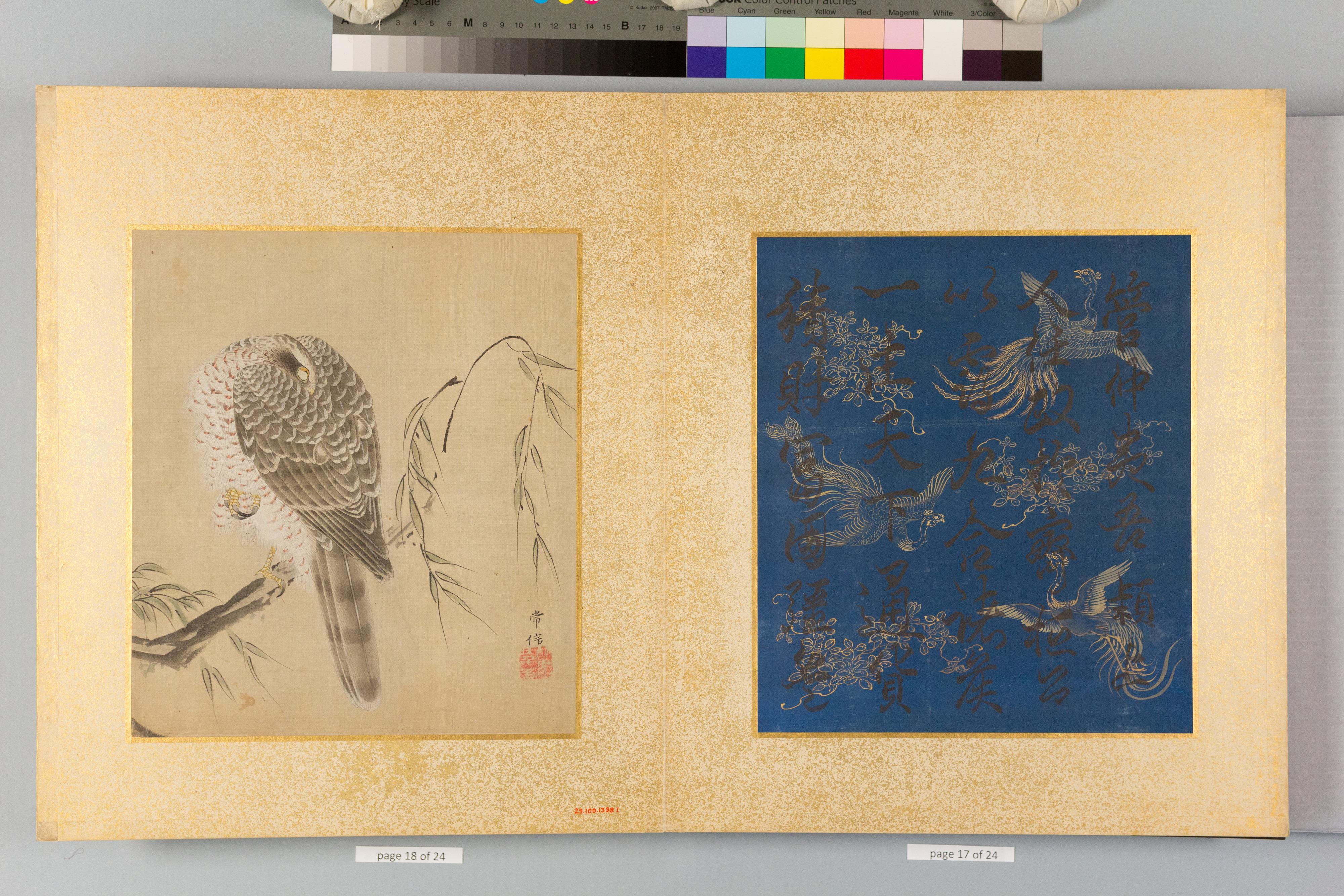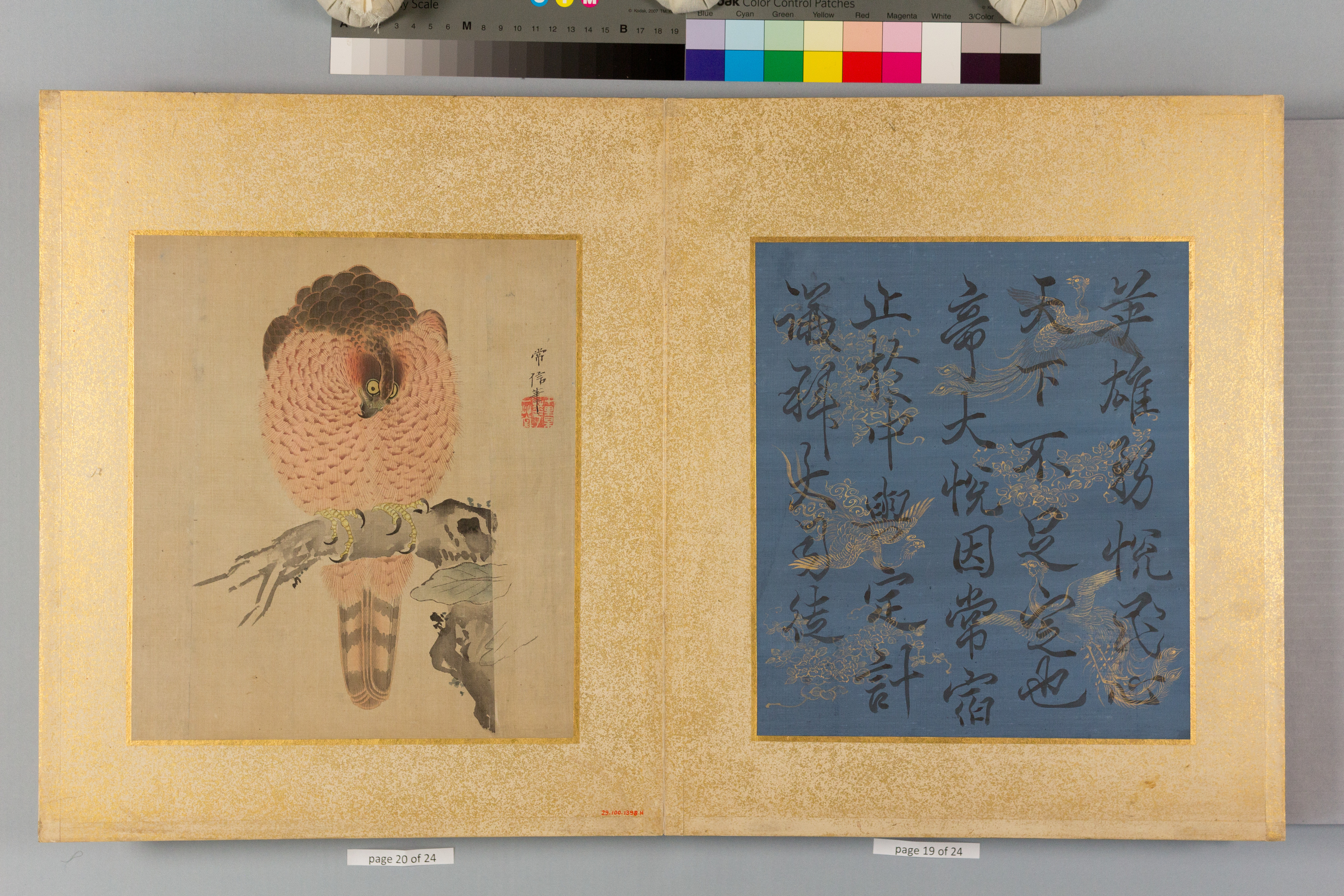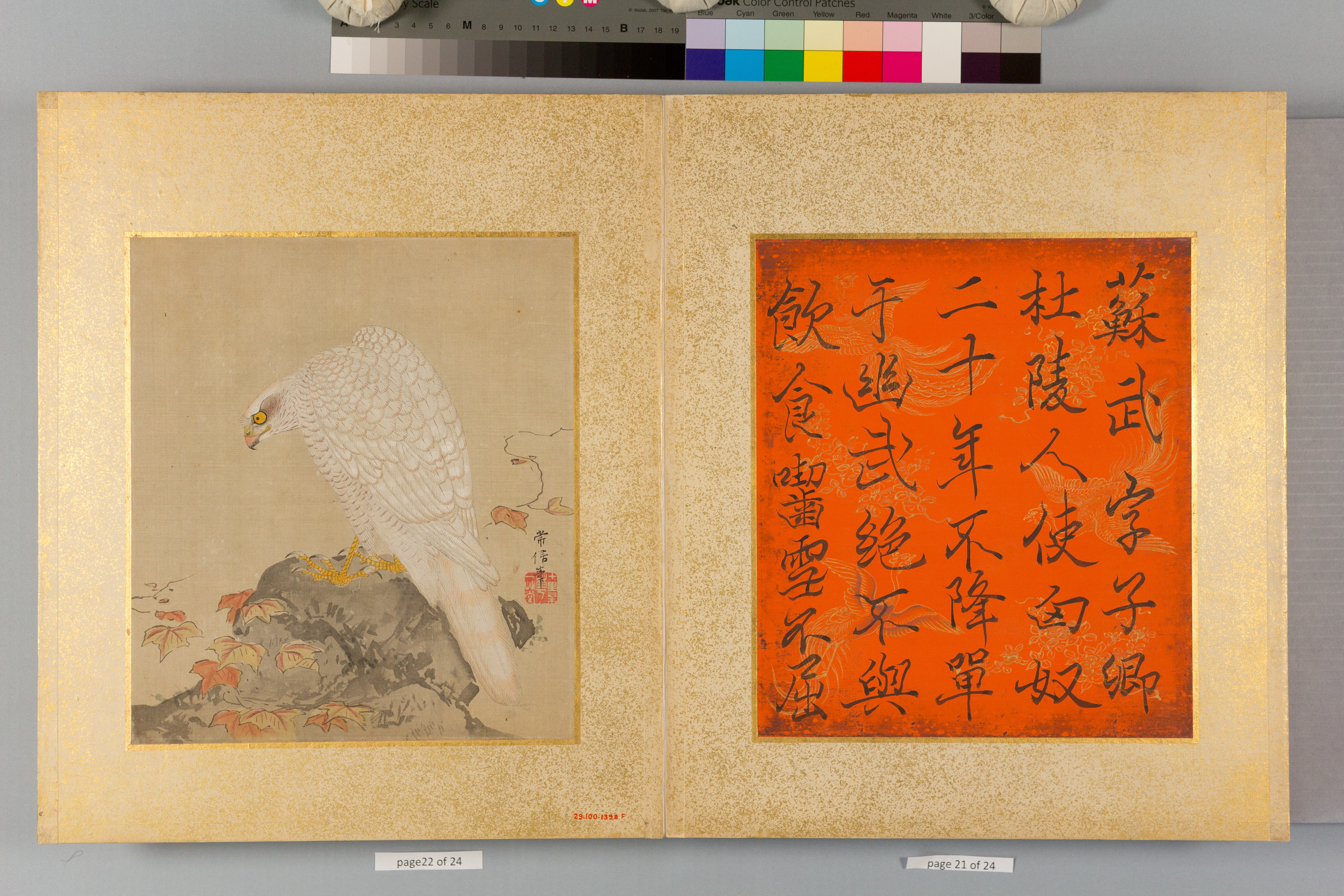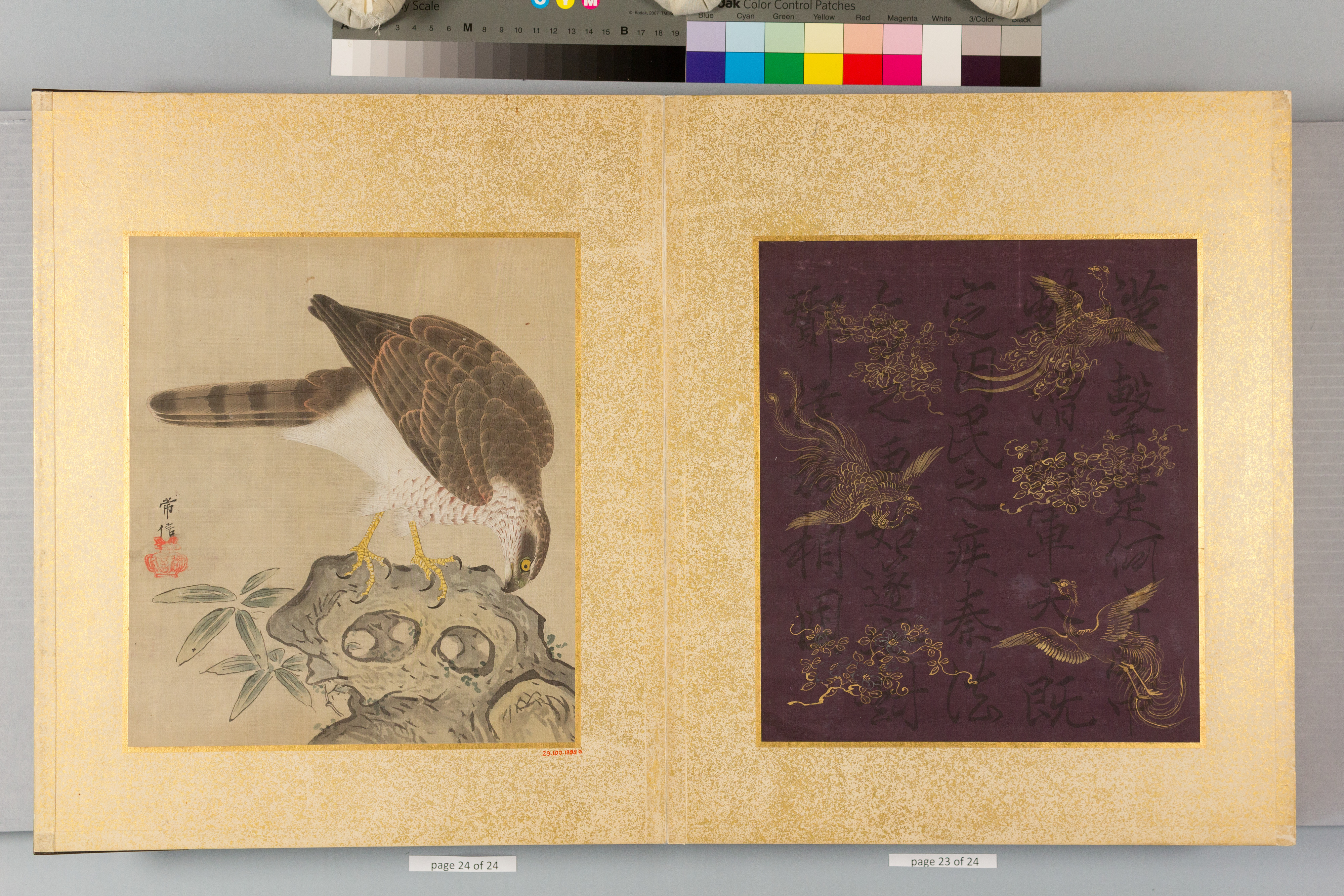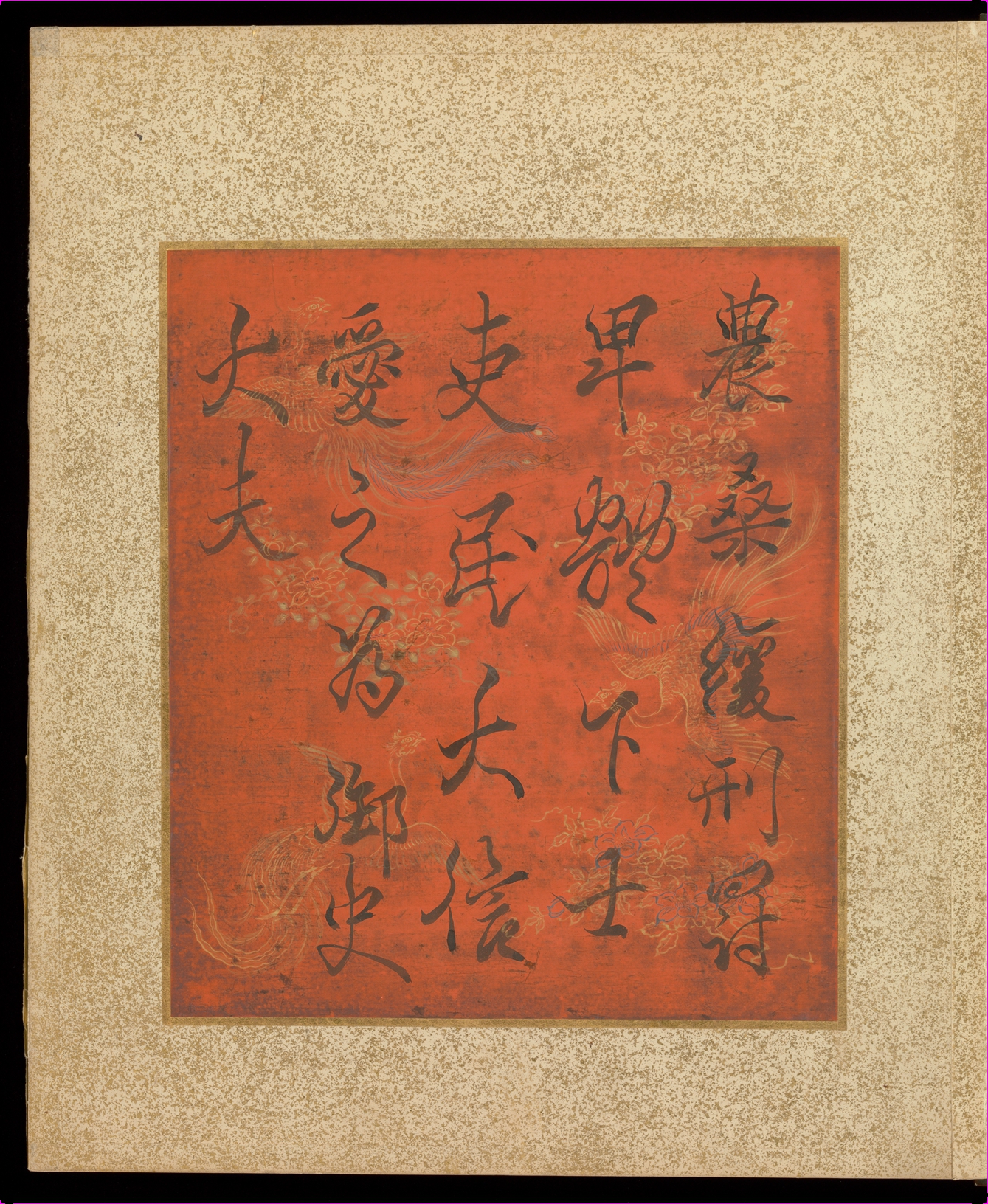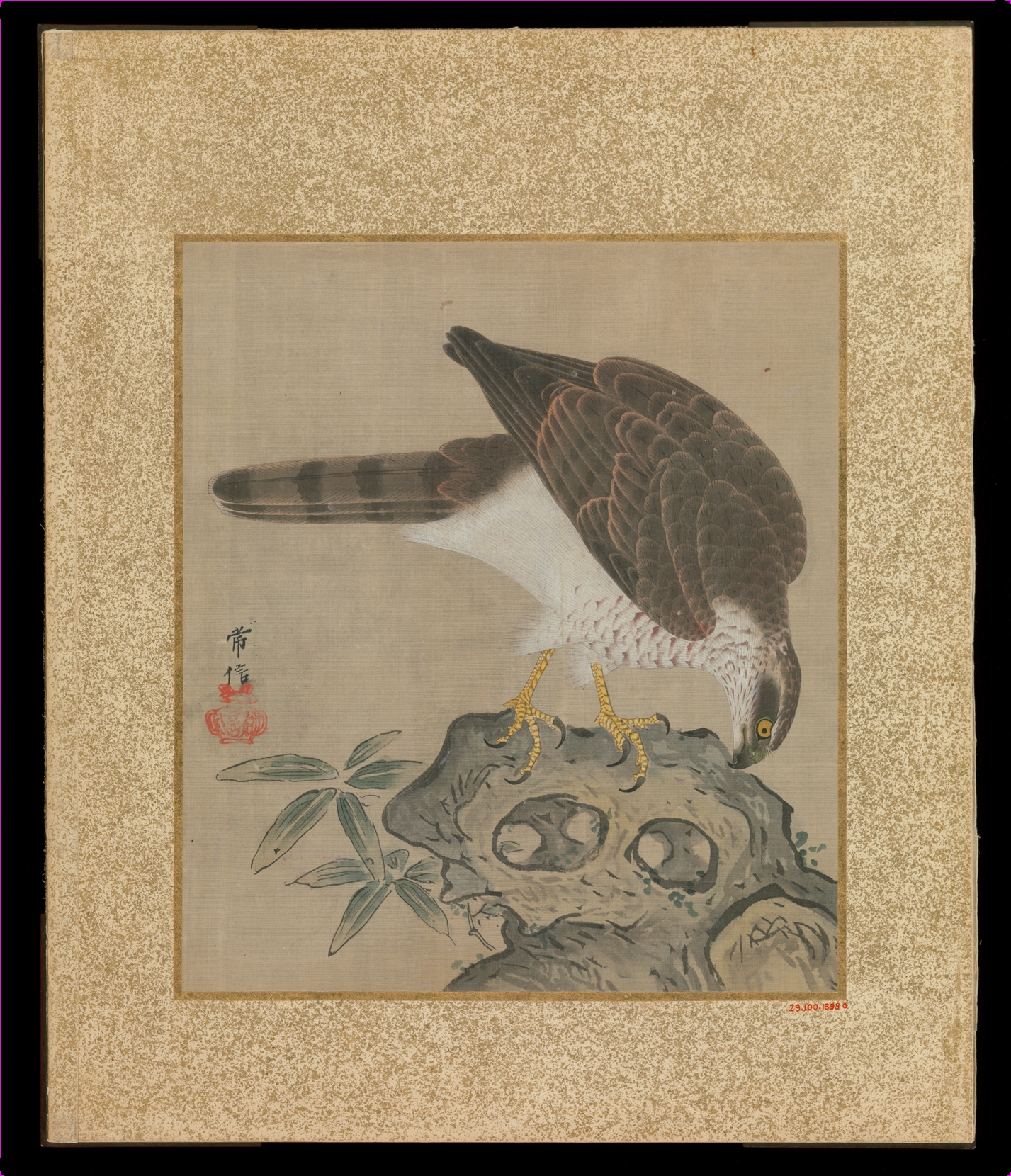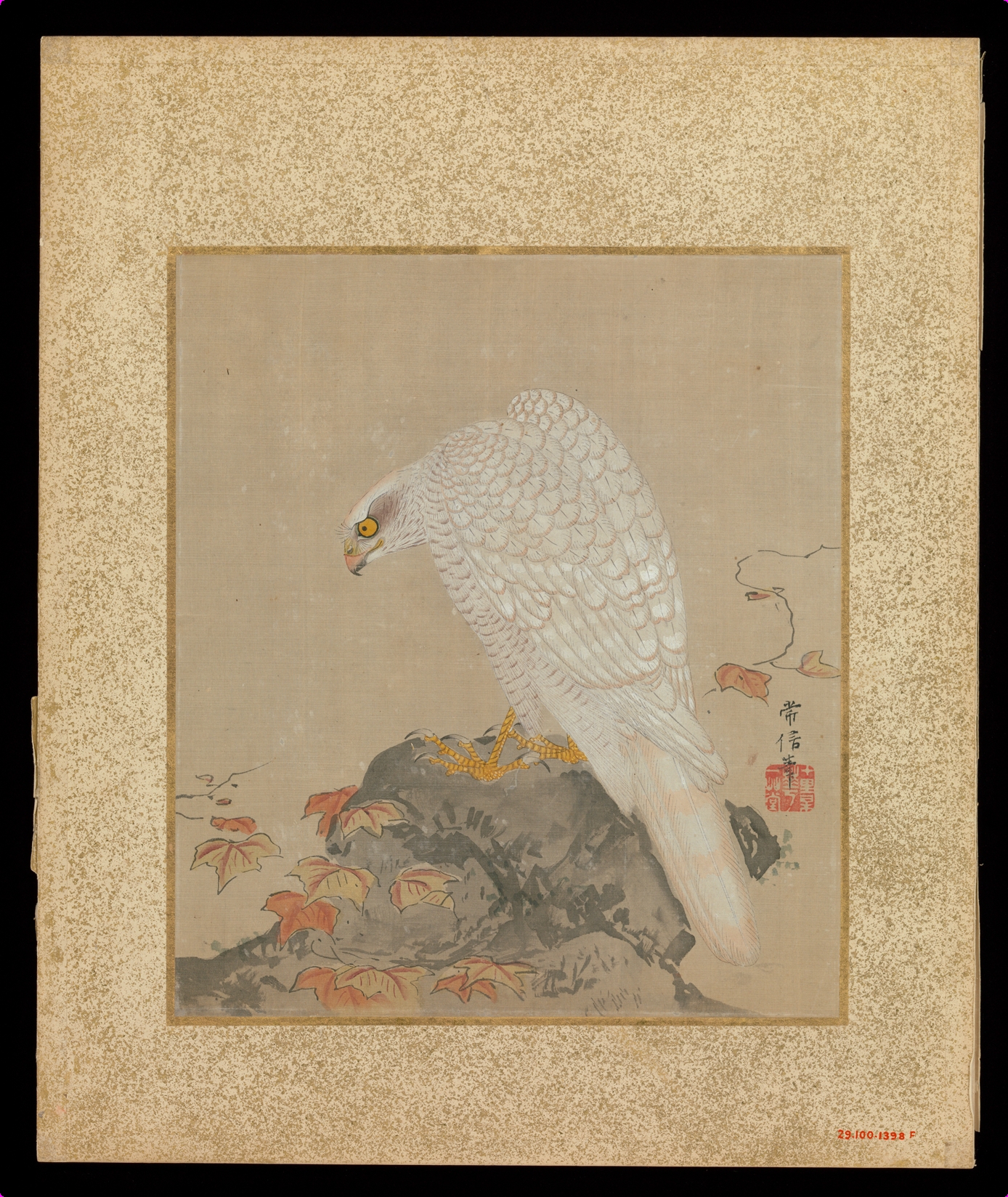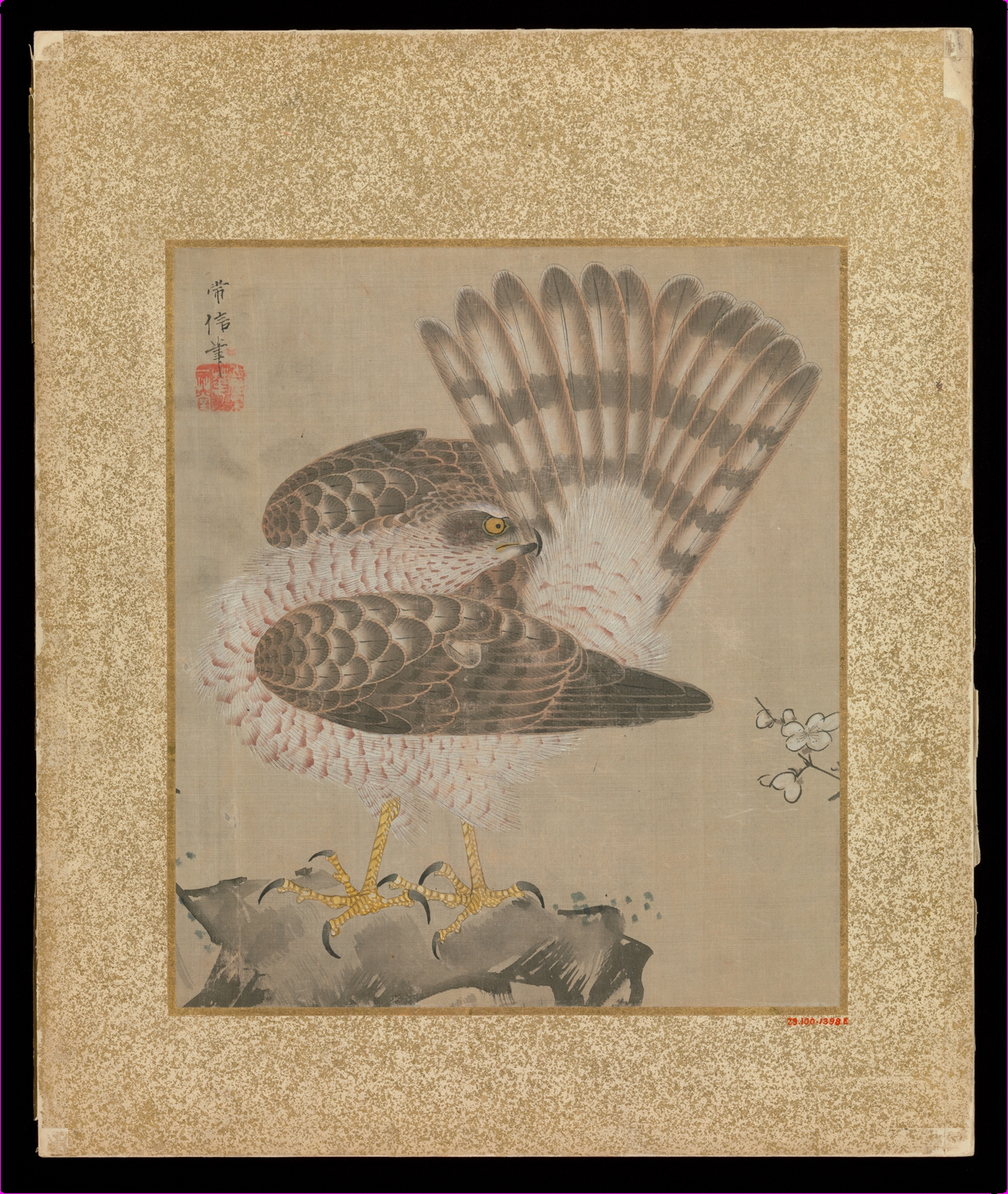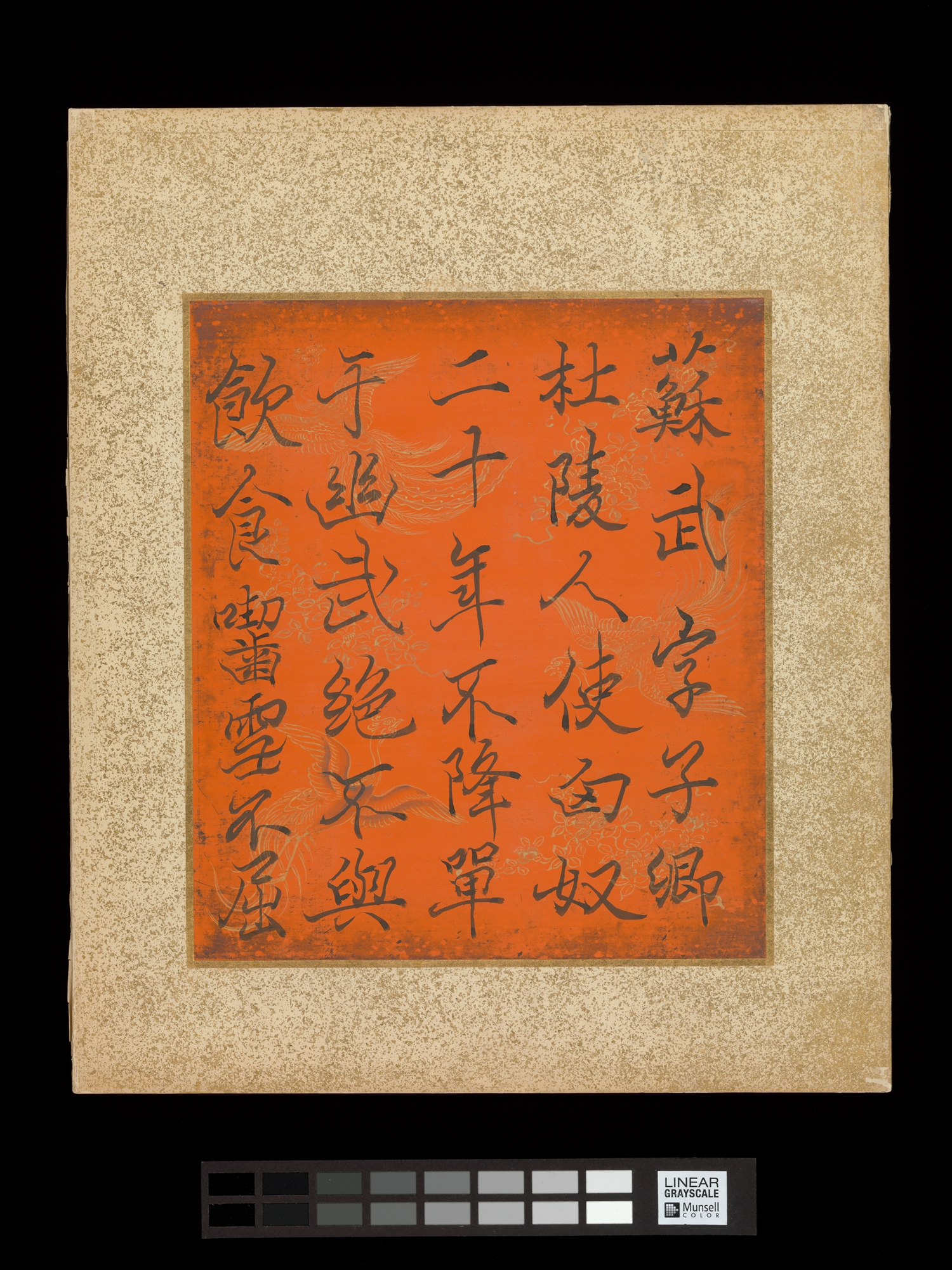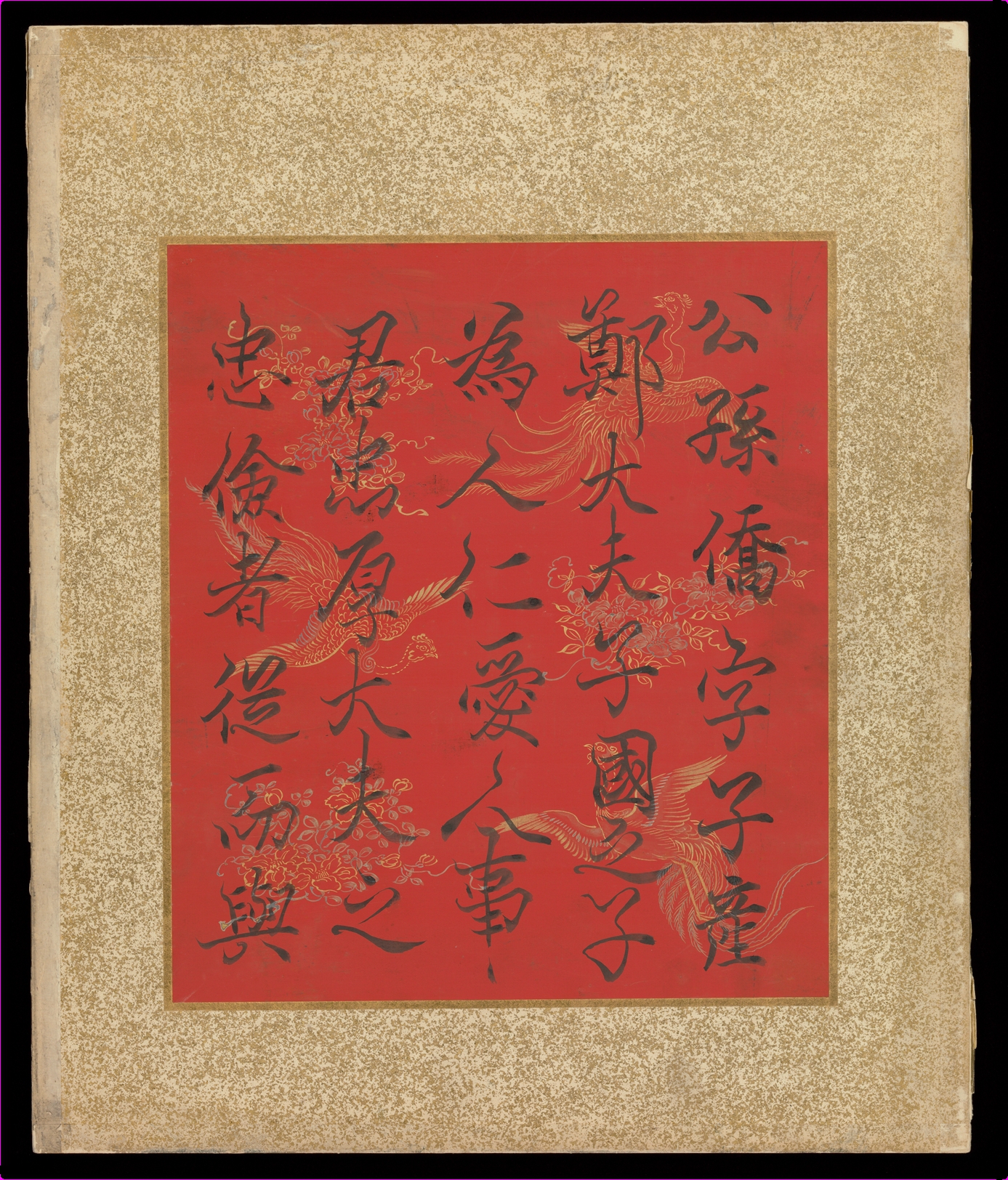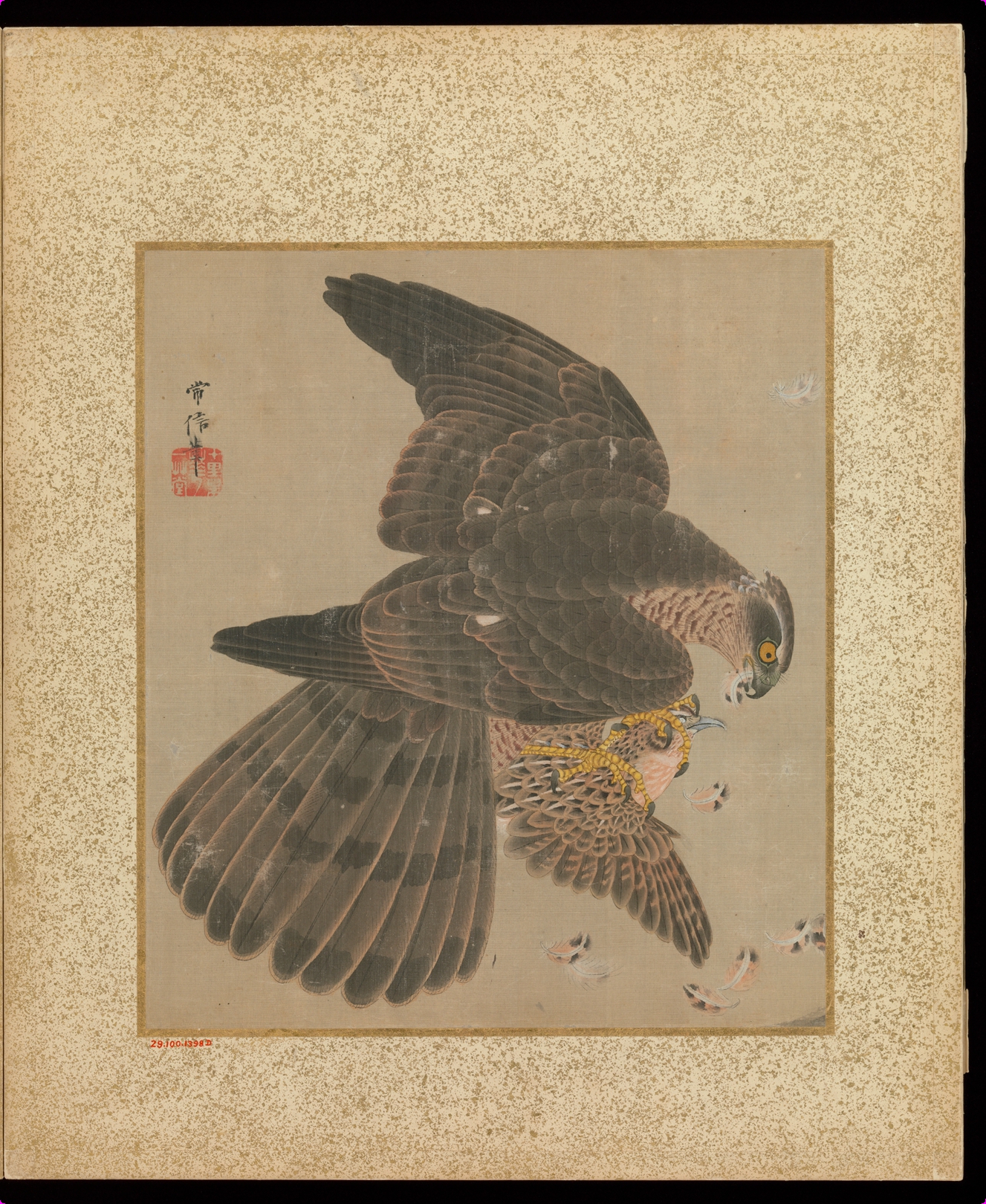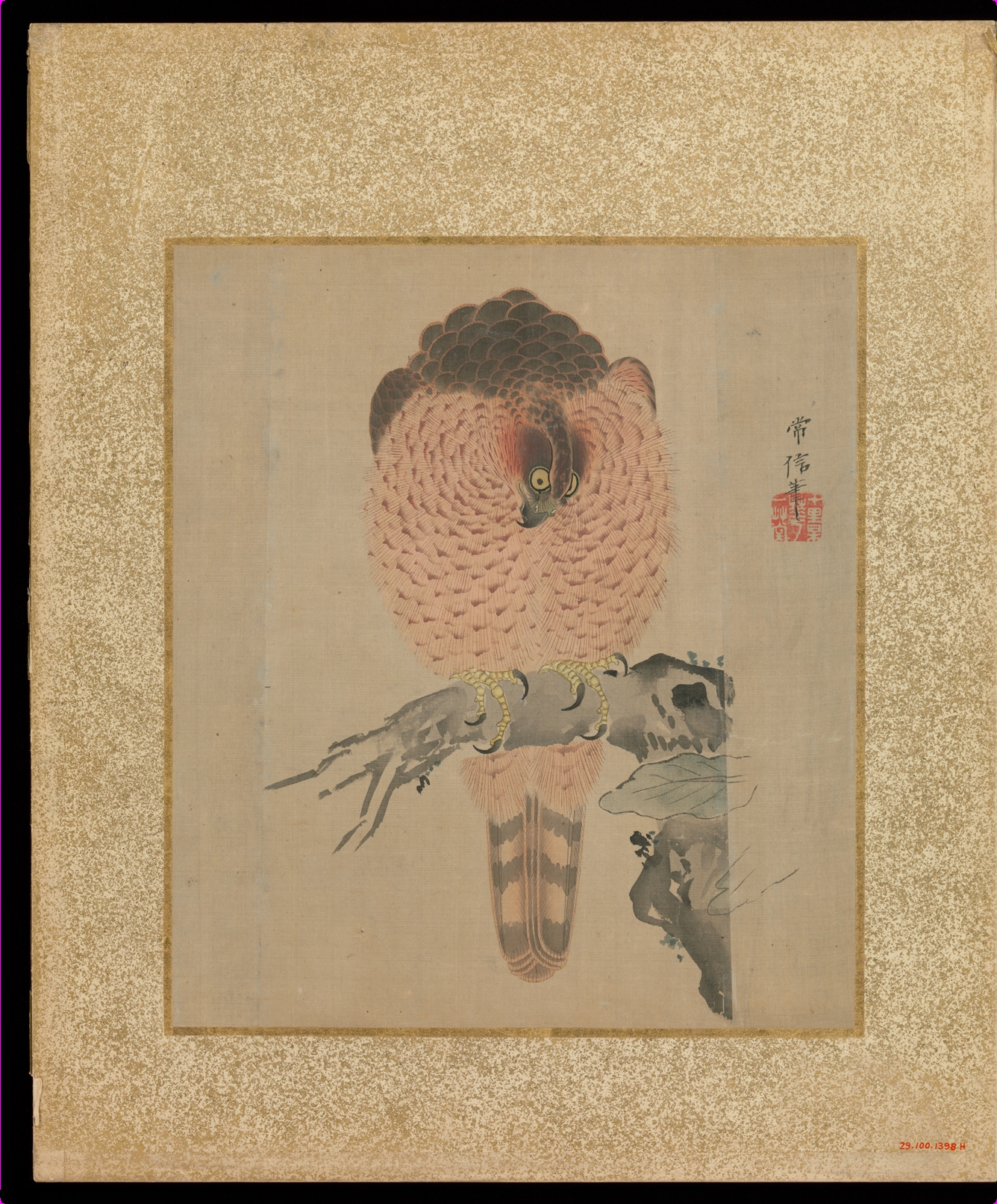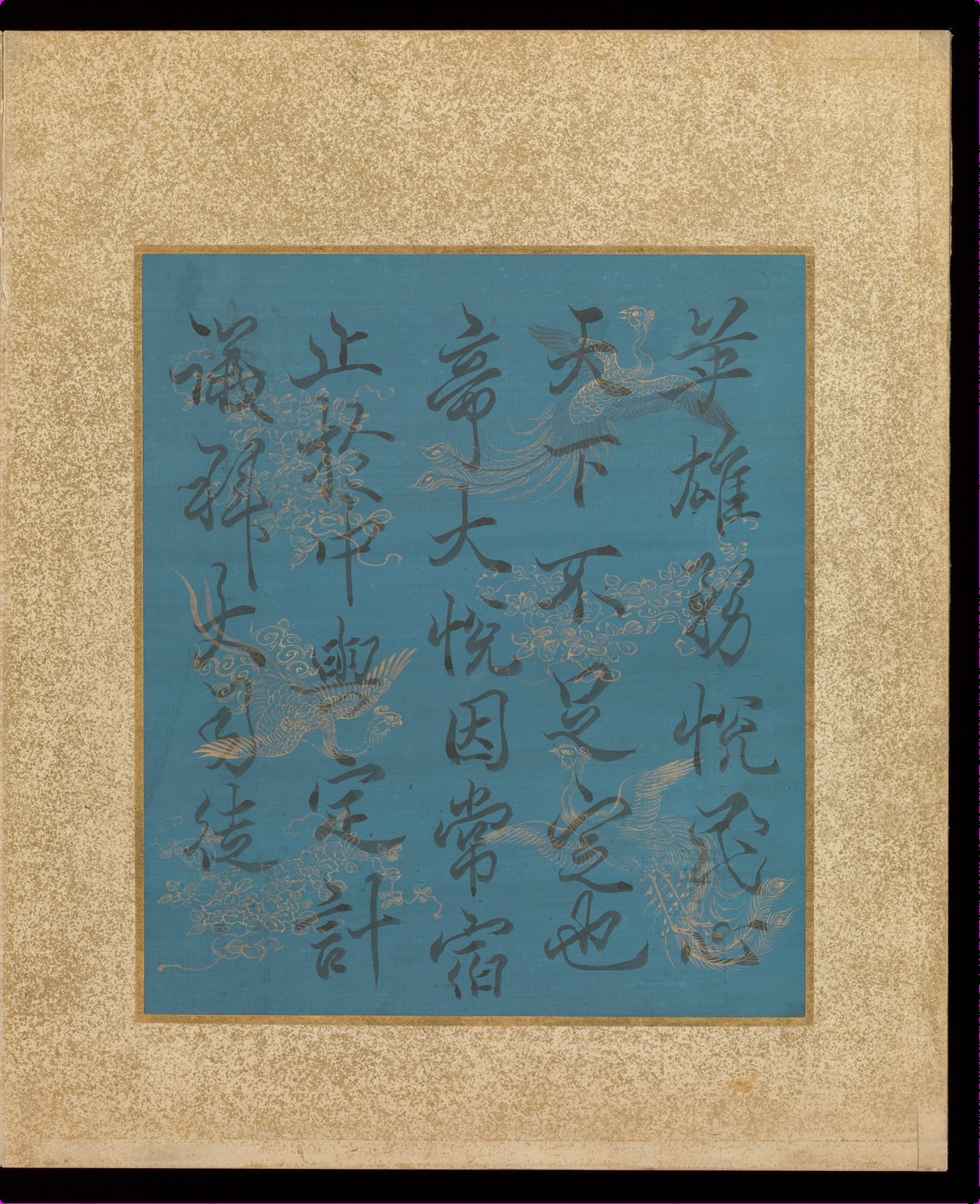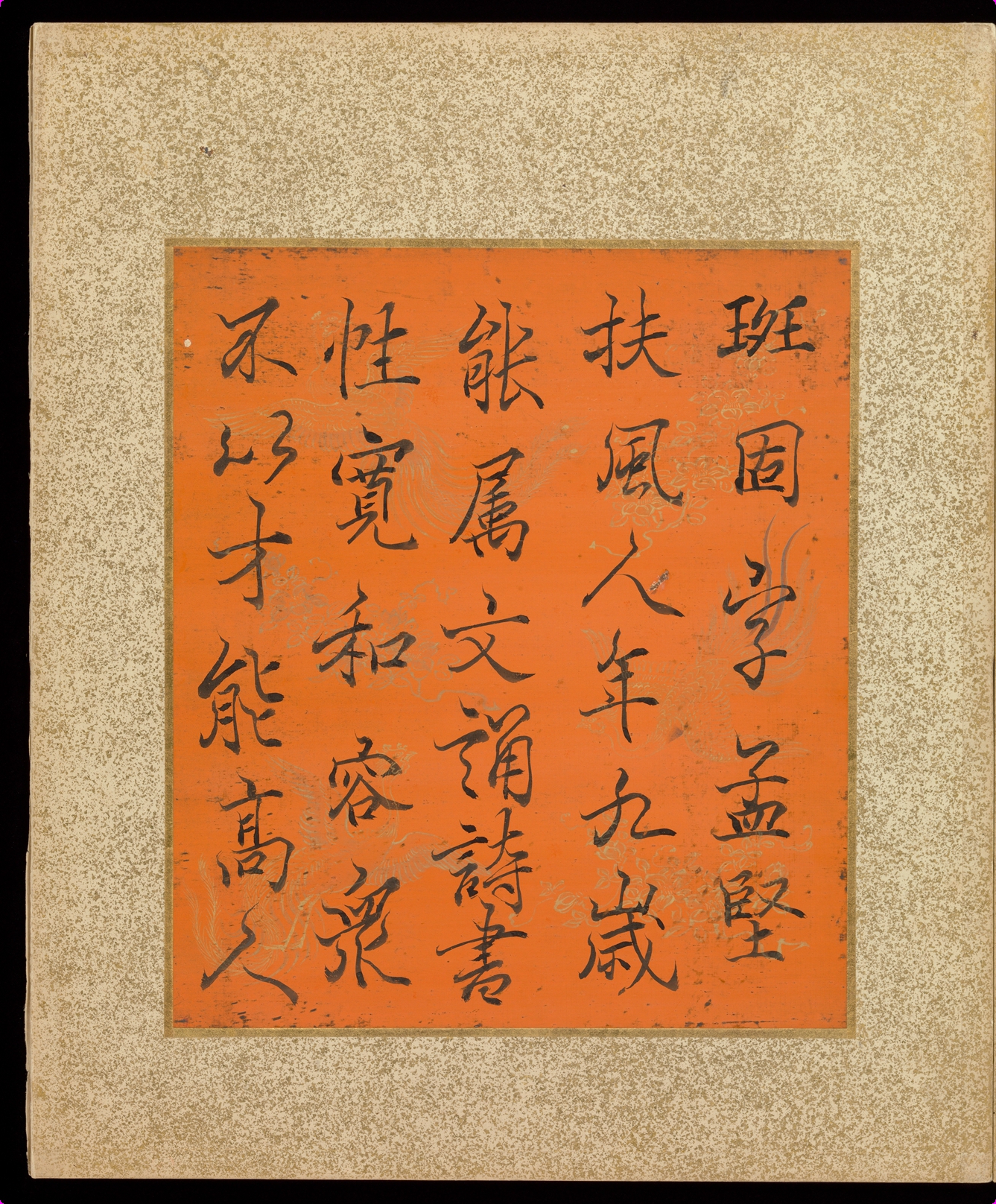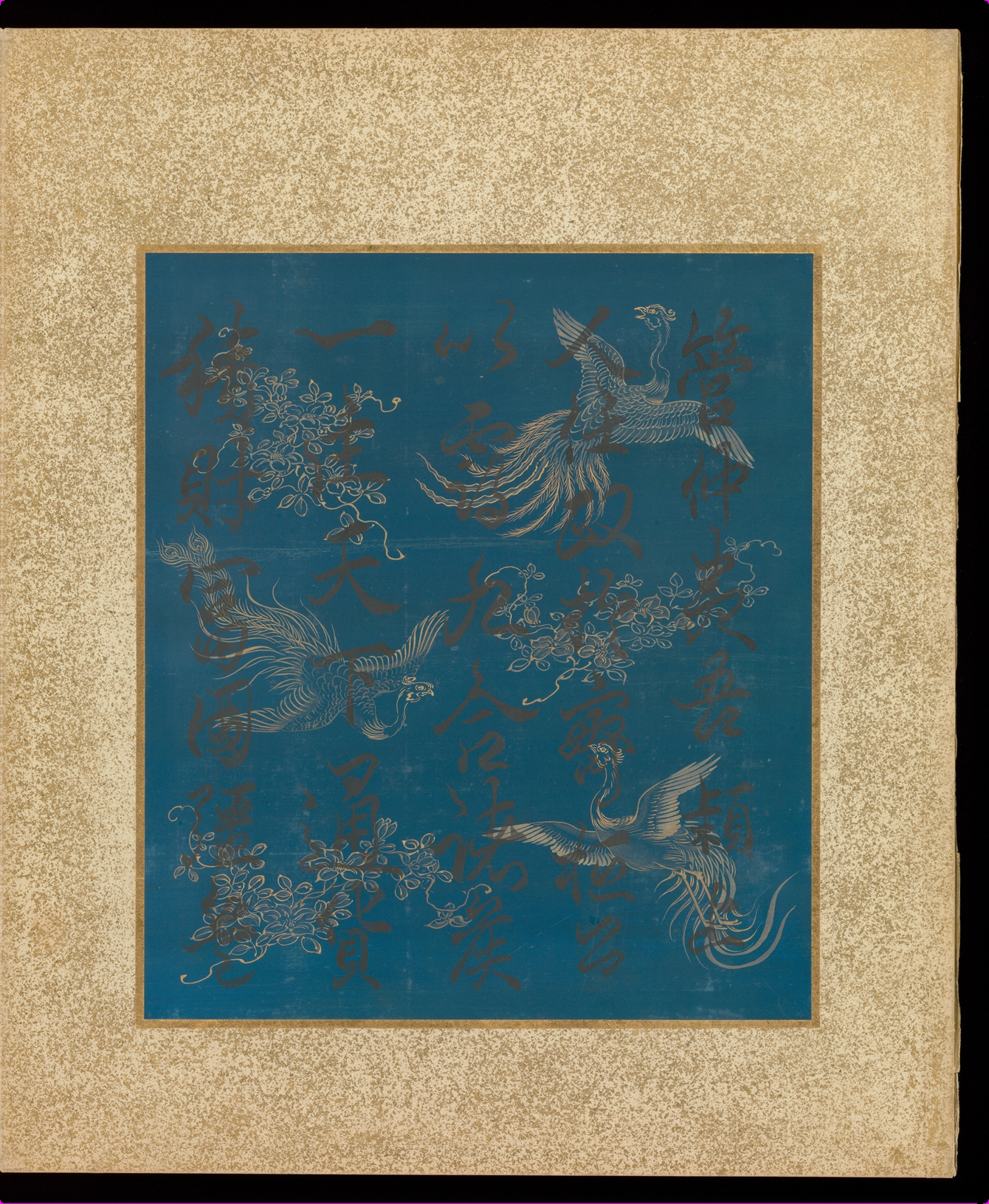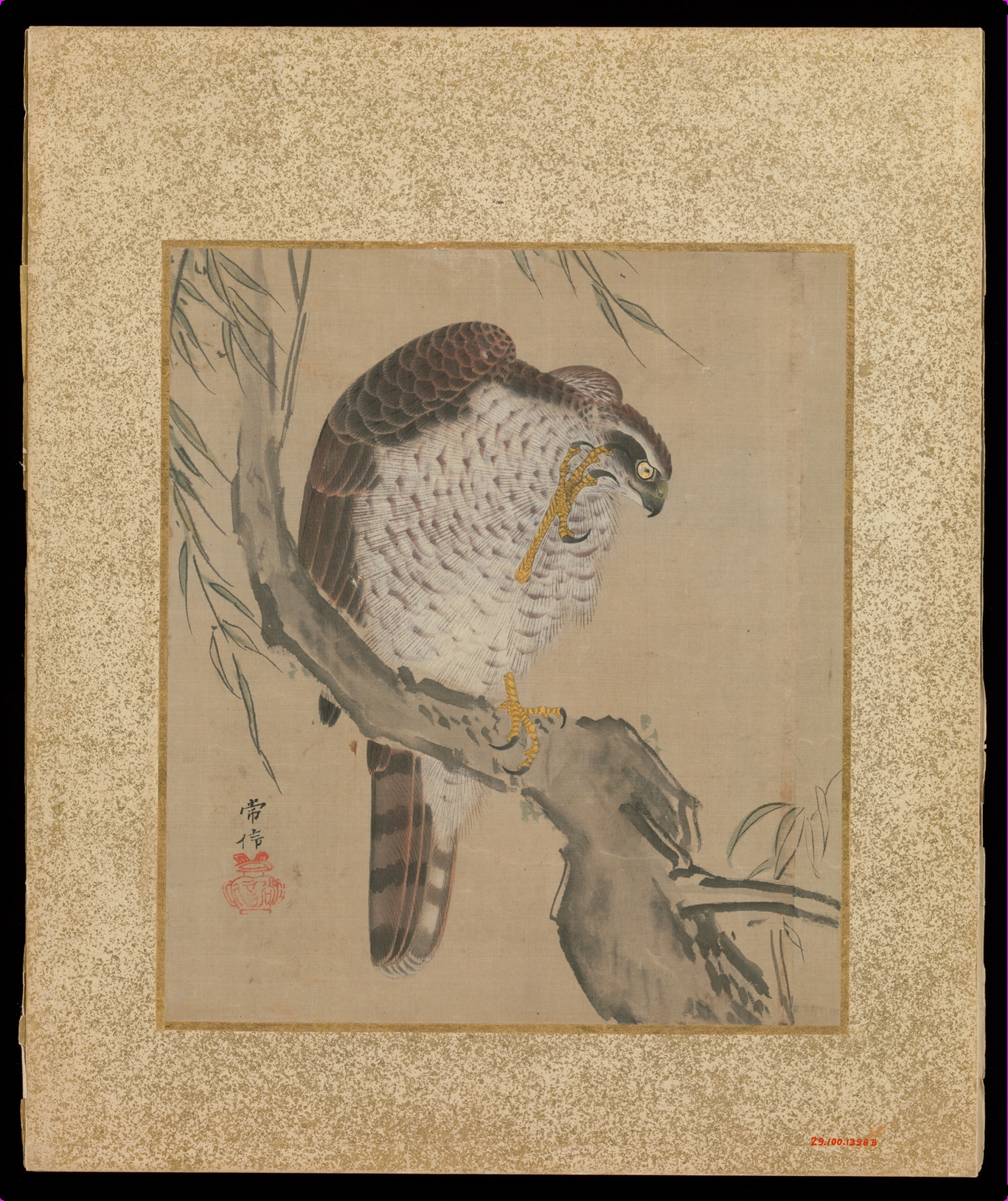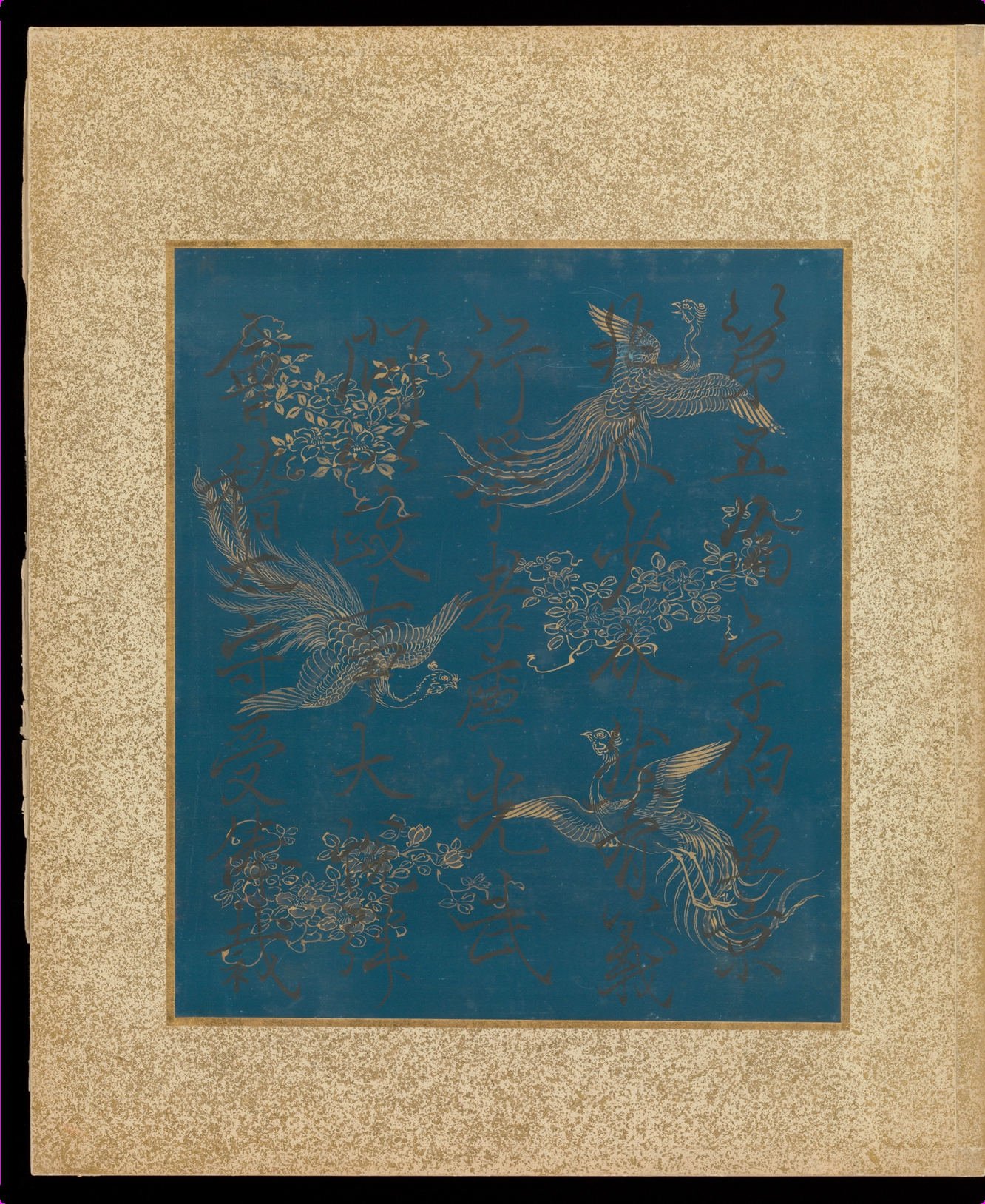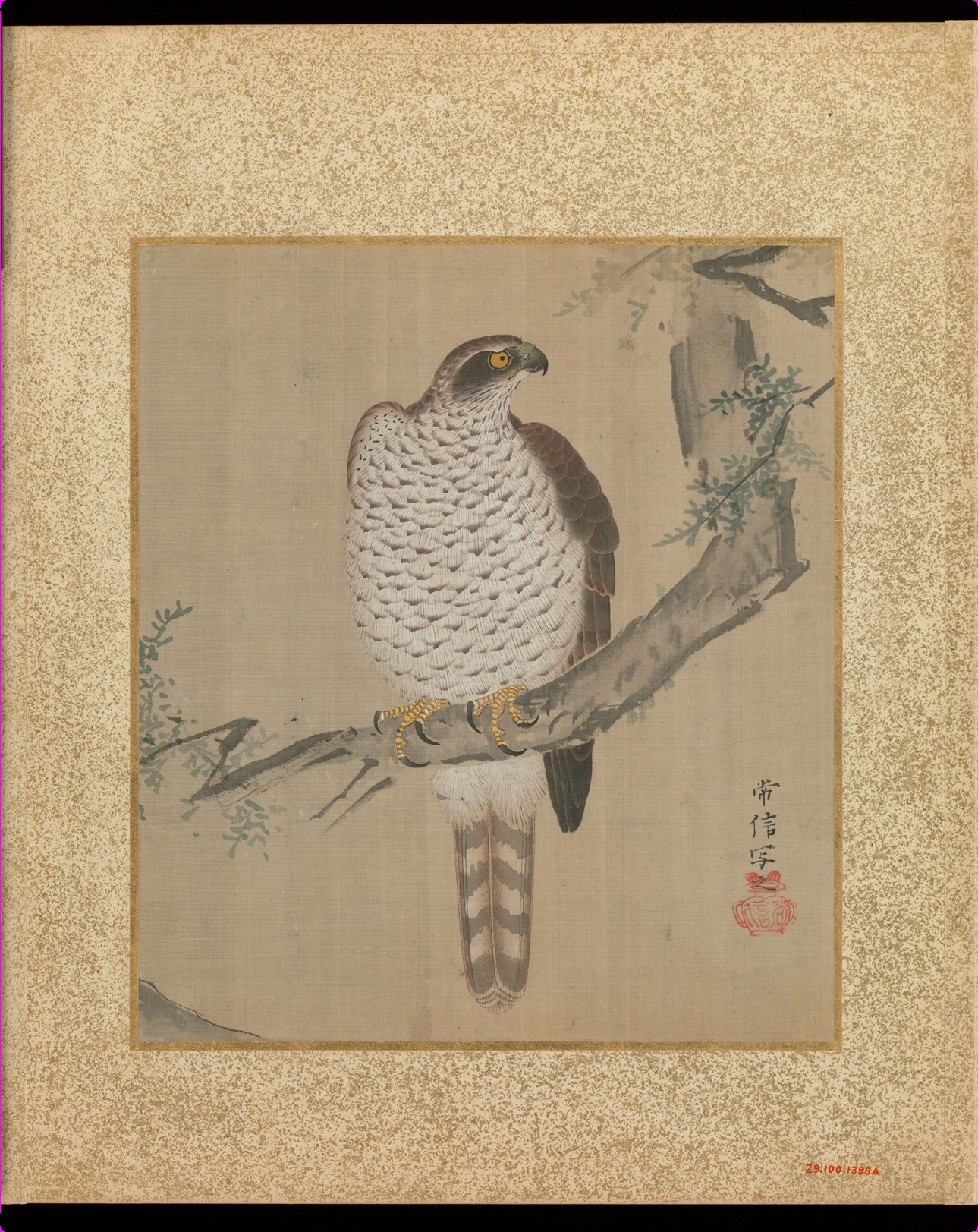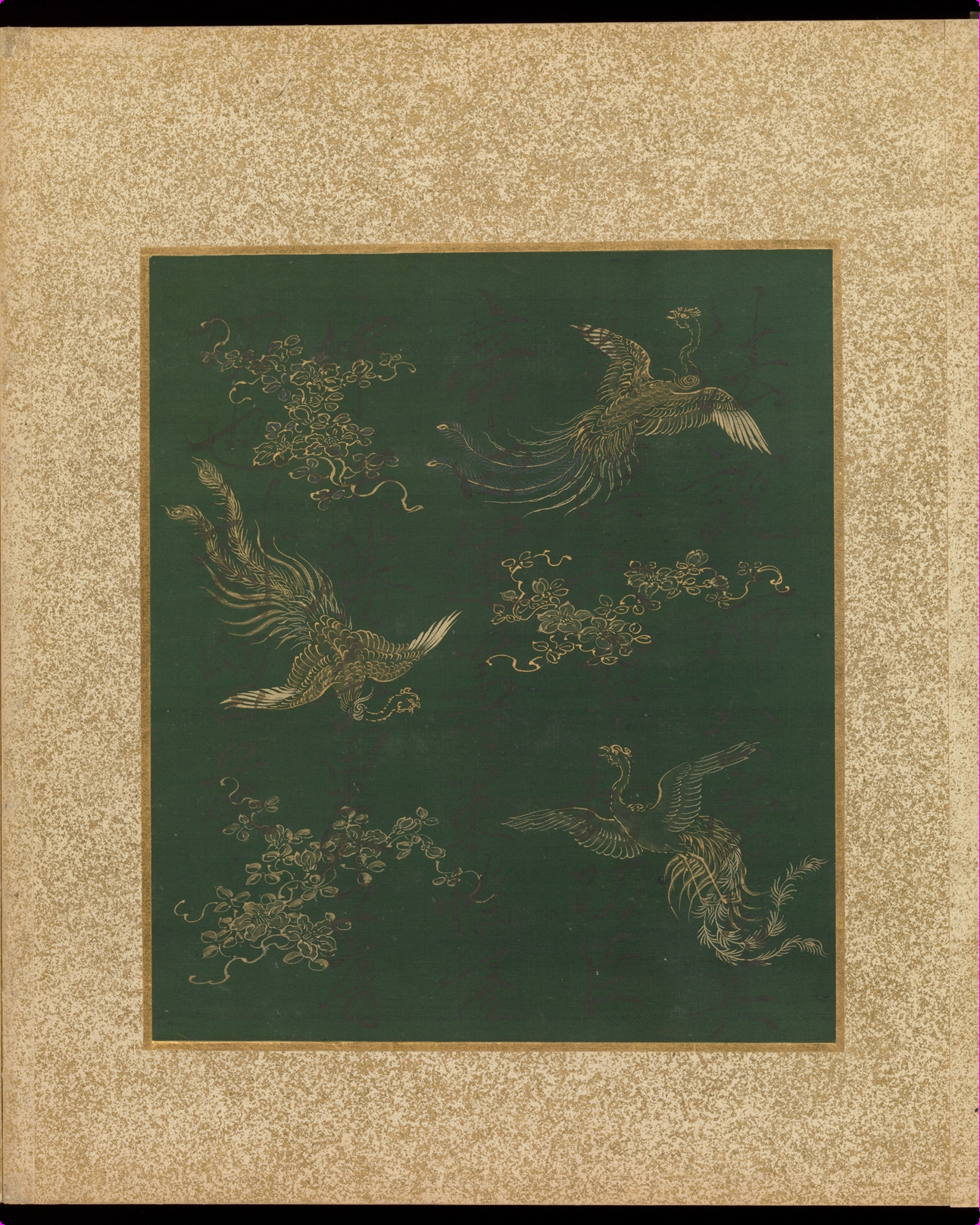Album of Hawks and Calligraphy
Kano Tsunenobu Japanese
Not on view
This album containing pictures of hawks—posed on boughs or rocks, awaiting their prey, and one with its prey already ensnared—was probably created for a young male member of the samurai elite, to instill appreciation for hawking and Chinese learning. The calligraphy, by an unidentified artist, is inscribed on sumptuously colored silk decorated with golden phoenixes, and the content is taken from a Confucian didactic text. Tsunenobu was a painter in the service of the Tokugawa shogunate. In 1650, while still a teenager, he took over from his father as the head of the Kobikichō Kano school in Edo. Hawking had become the exclusive right of samurai earlier in the seventeenth century, during the reign of Ieyasu, the first Tokugawa shogun, who was an avid practitioner. But between 1693 and 1709, toward the end of the artist’s life, hawking had been temporarily suspended by his primary patron, Tokugawa Tsunayoshi (1646–1709). Though Tsunayoshi was tyrannical in his politics, he was famous for his compassion toward birds and animals, to the extent that he made maltreatment of dogs a capital offense, earning him the nickname the Dog Shogun. Tokugawa Yoshimune (1684–1751), the eighth shogun, revived falconry for the warrior class, and authored a treatise on crane hawking.
Due to rights restrictions, this image cannot be enlarged, viewed at full screen, or downloaded.
This artwork is meant to be viewed from right to left. Scroll left to view more.


